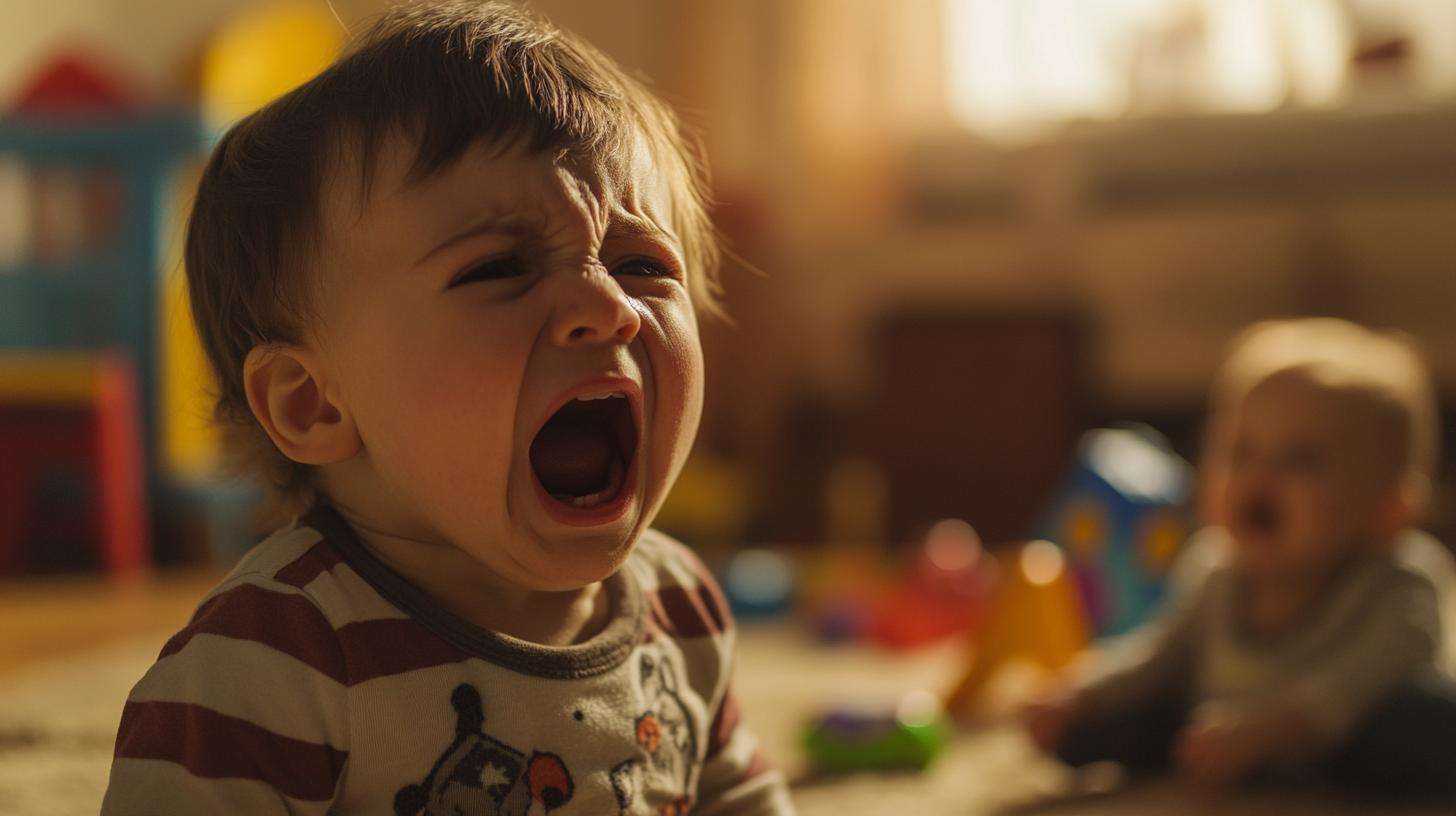Are you feeling overwhelmed by those tearful goodbyes with your little one? You’re not alone! Many parents experience the heart-wrenching reality of separation anxiety in toddlers. As Fran Walfish, PsyD, a psychotherapist, explains, “As children begin walking, they assert their independence but aren’t quite ready to fully separate.” This push and pull can leave both you and your toddler feeling anxious. But fear not! Understanding separation anxiety is the first step in easing those worries for both of you. Let’s dive into what separation anxiety is, why it happens, and how you can help your child navigate this challenging phase.
What Is Separation Anxiety?
Separation anxiety is a natural part of development, typically kicking in around 8 to 9 months and lasting until about age 3. During this time, toddlers may feel anxious when separated from their primary caregivers, leading to those dramatic farewell scenes. But why does this happen? As toddlers start to understand that you exist even when they’re not looking, they still struggle with the concept of time. Leaving them for what feels like an eternity can be terrifying! Yet, this anxiety is a sign of their growing independence, as they begin to assert their opinions about your whereabouts.
What Triggers Separation Anxiety?
Several scenarios can trigger separation anxiety in your little one:
- Saying goodbye: Even brief separations can cause stress as toddlers grapple with their newfound independence.
- Large gatherings: Crowds can be overwhelming, making your toddler fear getting lost in the shuffle.
- Bedtime: Nighttime can feel like the longest stretch of alone time, leading to increased anxiety.
Signs of Separation Anxiety
During this phase, you might notice your child:
- Clinging to you
- Throwing tantrums
- Resisting other caregivers
- Showing fear when you leave the room
These behaviors are normal and usually subside once you’re out of sight. Remember, this anxiety helps keep your child close to you, their safe haven.
How Can I Help My Toddler With Separation Anxiety?
While separation anxiety can last for months or even years, there are effective strategies to ease your child’s worries:
- Keep goodbyes brief: A quick farewell can help minimize anxiety. Avoid sneaking out, as this can increase their fears.
- Develop a leaving ritual: A consistent goodbye routine can create a sense of security.
- Prepare an activity: Engaging your child in a fun activity with their caregiver can distract them from your departure.
- Acknowledge their feelings: Let your toddler know it’s okay to miss you, and reassure them that you’ll be back.
- Create a soothing bedtime routine: Establish a calming pre-sleep ritual to help them feel secure at night.
- Bring a meaningful item: A special toy or picture can provide comfort when you’re not around.
As you navigate this emotional journey, remember that every child is unique. Celebrate the small victories and be patient with the process. With your love and support, your toddler will learn that separation is just a part of life, and that you’ll always come back.
separation anxiety in toddlers
A Parent’s Guide to Separation Anxiety in Toddlers
If goodbyes with your toddler are full of screams and tears, your little one might be experiencing separation anxiety. “As children begin walking, they assert their independence and move away from their parents. But they’re not ready to fully separate,” says Fran Walfish, PsyD, psychotherapist and author of The Self-Aware Parent.
Understanding Separation Anxiety
Separation anxiety is a common experience for toddlers, manifesting as feelings of distress when they are separated from their primary caregivers. This phase typically begins around 8 to 9 months and can last until the age of 3, although it can affect older children and even adults. The root of this anxiety lies in the toddler’s developing understanding of object permanence—the realization that people and objects continue to exist even when they are out of sight. However, toddlers struggle with the concept of time, making even short separations feel daunting.
Why Does Separation Anxiety Happen?
Separation anxiety is a natural part of child development. As toddlers grow and explore their independence, they often feel conflicted about being away from the security of their caregivers. This anxiety can be seen as a sign of their increasing autonomy, as they express their desire for control over their environment. “They have their own opinion on the situation—that parents shouldn’t leave—and want to exert control,” explains Miranda Goodman-Wilson, PhD.
Triggers of Separation Anxiety
Several situations can trigger separation anxiety in toddlers:
- Saying Goodbye: The act of parting can be particularly stressful for toddlers, who need reassurance that their caregivers will return.
- Large Gatherings: Crowds can be overwhelming, leading to fears of losing sight of their parents.
- Bedtime: Nighttime and naptime can be anxiety-inducing, as these are often the longest periods of separation.
Signs of Separation Anxiety
Separation anxiety is most prevalent between 8 and 18 months. Signs that your toddler may be experiencing this anxiety include:
- Clinging to the caregiver
- Throwing tantrums when it’s time to part
- Resisting other caregivers
- Showing fear or restlessness when left alone
These behaviors typically subside once the caregiver is out of sight, as the anxiety serves to keep the child close to their source of love and safety.
Do Toddlers Outgrow Separation Anxiety?
While separation anxiety tends to decrease as children grow older, it can resurface during times of stress or illness. For instance, a previously confident toddler may cling to their parent during drop-off if they are feeling unwell or anxious. This behavior is a normal part of development and will gradually ease over time, although every child is unique in their timeline.
How to Help Your Toddler with Separation Anxiety
Here are several strategies to ease your toddler’s separation anxiety:
1. Keep Goodbyes Brief
When leaving your child, provide advance notice and keep your farewells short. Prolonged goodbyes can heighten anxiety. “If you act anxious or keep returning for another hug, they will think there is something to worry about,” advises Vincent Barone, Ph.D.
2. Develop a Leaving Ritual
Create a consistent routine for goodbyes. For example, you might say, “I will be back to get you after work. I love you,” followed by a hug. This predictability can help ease transitions.
3. Prepare an Activity
Ask caregivers to have an engaging activity ready when you leave. This distraction can help shift your toddler’s focus away from your departure.
4. Acknowledge Their Feelings
Validate your toddler’s feelings by acknowledging their anxiety. You might say, “I know you’re going to have a really good time with Grandma, but it’s okay if you miss me.” This reassurance can help them feel understood.
5. Monitor Social Interactions
At large gatherings, allow your toddler to approach others at their own pace. Stay close by to provide comfort if they become overwhelmed.
6. Create a Soothing Bedtime Routine
Establish a calming nighttime ritual to help your toddler feel secure as they transition to sleep. This could include a bath, storytime, or soft music.
7. Encourage Independence
After naps, allow your toddler some time to play independently in their crib. This can help build their confidence and comfort with being alone.
8. Bring a Comfort Item
Provide your child with a meaningful item, such as a stuffed animal or a family photo, to help soothe them when you’re apart.
9. Use Educational Media
Watch age-appropriate shows that address separation anxiety, such as episodes from Daniel Tiger’s Neighborhood. These stories can help normalize their feelings.
10. Read Books About Separation
Consider reading children’s books that address separation anxiety, like The Kissing Hand by Audrey Penn, to help your child understand their feelings.
When to Seek Help
While separation anxiety is a normal part of development, excessive anxiety may indicate a deeper issue. If your child exhibits extreme symptoms, such as vomiting, nightmares, or persistent worry, consult a healthcare provider. Factors such as parental conflict, divorce, or a stressful childcare environment can exacerbate anxiety. Additionally, a family history of anxiety disorders may play a role.
Conclusion
Separation anxiety is a natural phase in toddler development that reflects a healthy attachment to caregivers. By understanding the triggers and employing strategies to ease anxiety, you can help your child navigate this challenging time. Remember, patience and reassurance are key as your toddler learns to cope with separation. With your support, they will gradually gain confidence and independence, making the transition easier for both of you.

| Key Points | Details |
|---|---|
| Understanding Separation Anxiety | Separation anxiety is a normal developmental phase in toddlers, typically starting around 8-9 months and lasting until age 3. |
| Triggers of Separation Anxiety | Common triggers include saying goodbye, large gatherings, and going to sleep, which can cause stress and anxiety in toddlers. |
| Signs of Separation Anxiety | Signs include clinging, tantrums, resistance to other caregivers, and restlessness when separated from the primary caregiver. |
| Managing Separation Anxiety | Strategies include keeping goodbyes brief, developing a leaving ritual, preparing activities for the child, and acknowledging their feelings. |
| Long-term Outlook | Separation anxiety usually decreases with age but can resurface due to stress or illness. It’s a normal part of child development. |
| Helpful Techniques | Creating a soothing bedtime routine, allowing independence after naps, and providing meaningful items can help ease anxiety. |
| When to Seek Help | Watch for excessive symptoms like vomiting or nightmares. If anxiety is extreme or persists, consult a healthcare provider. |



